Muslim migration to Trinidad came in two waves. The first was the enslaved Africans and the second was the Indentured Indians. The built Islamic heritage that we see today—the mosques or masjids, were built after the Indentured Indians came to Trinidad.
During indentureship places of worship were simple bamboo sheds which were built near to the barracks. Of course, worship would take place at night, because nothing could interrupt the workday on the plantation. As the Indians completed their indenture contracts and moved off the estates and formed their own villages, mosques were set up with their own Imams around the 1860s. The Indians used their personal incomes to build the first mosques, which were typically wooden. Originally only men attended but muslim women began attending special mosque activities around 1928 in Peru Village (St James) and by the 1930s religious classes or maktabs were conducted on the mosque compound. These were Islamic knowledge classes (Dr Halima Kassim).
The mosques or masjids were a method of institutionalizing the faith. Below are some of the early mosques built in Trinidad:
- The Calcutta Asja Majid, 1863
Perhaps the first masjid or mosque built in Trinidad was the Calcutta Asja Majid, founded in 1863 (Ali, 2009). It was founded in Freeport by Dookie Meah, who arrived on the Fath al Razack. He was assigned to Exchange Estate in Couva. He approached the state and was given a Crown Grant (meaning state lands) to establish a mosque. In 1868 the Governor exempted the mosque from rates and taxes.
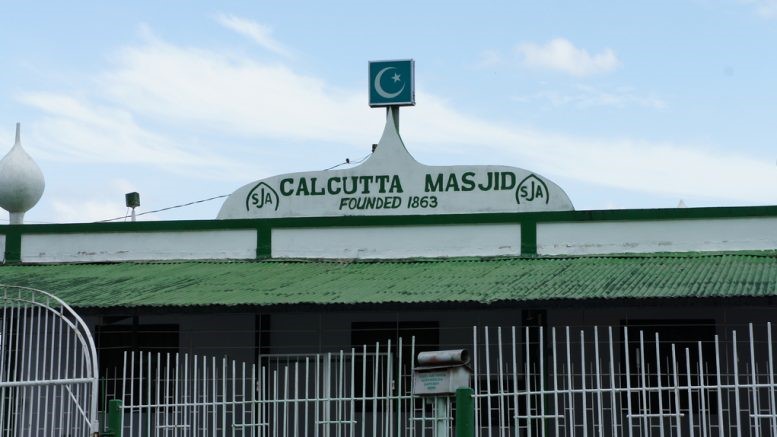
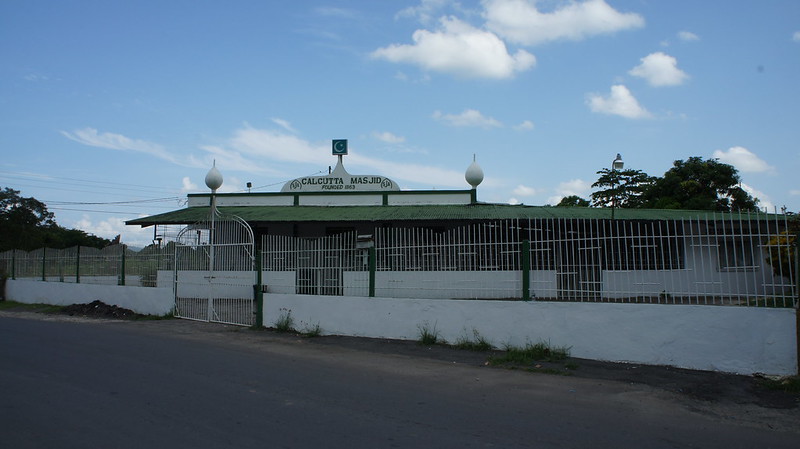
Pictures of the Calcutta Asja Masjid, founded in 1863
Source: https://www.caribbeanmuslims.com/dookie-meah/2
- The Iere Village Mosque, 1868
The Iere Village Masjid was built in 1868 in Nagir Village on the outskirts of Iere Village, Princes Town.
It originally looked like this:
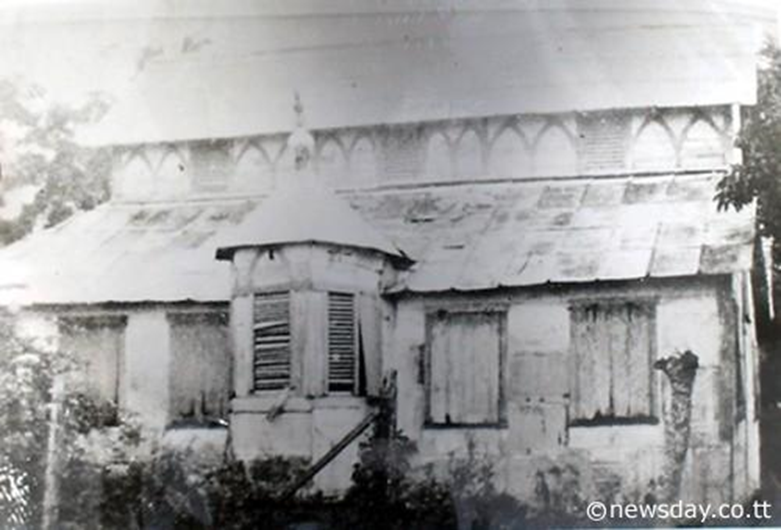
Picture of the Original Iere Village Masjid, built 1869.
Sources: Newsday.co.tt and Caribbean Muslims.com
https://www.caribbeanmuslims.com/iere-village-princes-town-masjid
It was rebuilt for its Centenary in 1968.
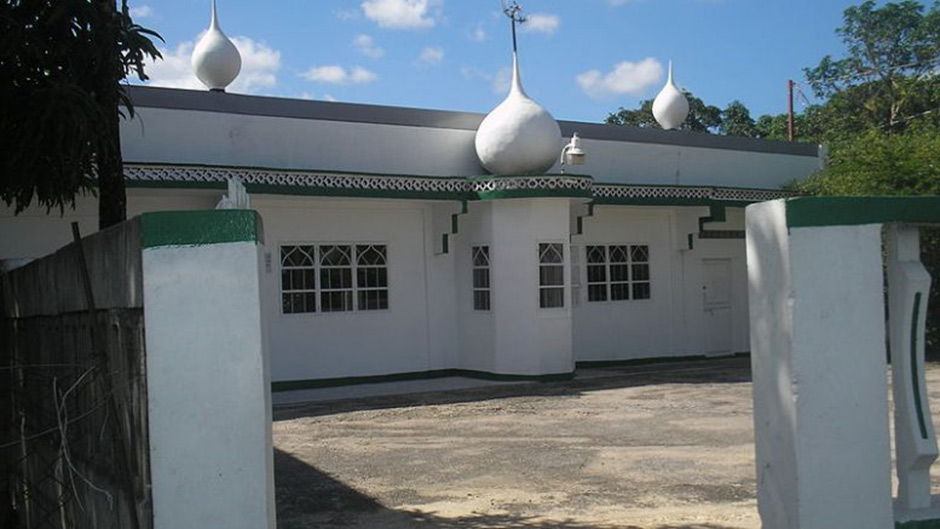
Picture of the Rebuilt Iere Village Mosque, 1968
Source: https://www.caribbeanmuslims.com/iere-village-princes-town-masjid
The Mosque was built along the Iere Village Main Road by the Indian Indentured Immigrants who worked at the surrounding estates. In 1863, Nagir Mohammed came to Trinidad from India at age 17. He was assigned to Friendship Estate. Five years later, in 1868, Nagir along with Cariman and Ahemullah, two other indentured labourers, built the Mosque (Princes Town Regional Corporation).
- The Hassanali Meah Mosque also known as the Macoon Street Masjid, 1888
The Hassanali Meah Mosque was built around 1888 on Macoon Street, Victoria Village, San Fernando. The original mosque was built by the late Hassanili Meah, an Indian indentured immigrant who settled in Victoria village. It was an important place of worship for southern Trinidad. Originally the building only had one window space, three door spaces and no toilet facilities. The walls were made of oven bricks and limestone (Edoo, 2019). In 1946 repairs were done but as time passed cracks appeared on the walls. In 1960 the demolition of the mosque began and a new building was constructed on the same spot as the old one. The new fence was made of the oven bricks from the original Mosque’s walls and three pieces of timber were repurposed as a shoe stand. In 1987 this structure was also demolished and rebuilt.
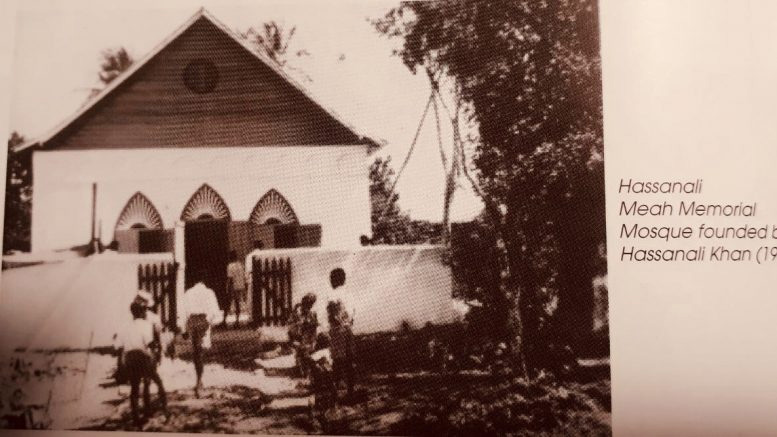
Picture of the Hassanali Memorial Mosque in the 19th century
Source: https://www.caribbeanmuslims.com/history-of-hassanali-meah-memorial-masjid
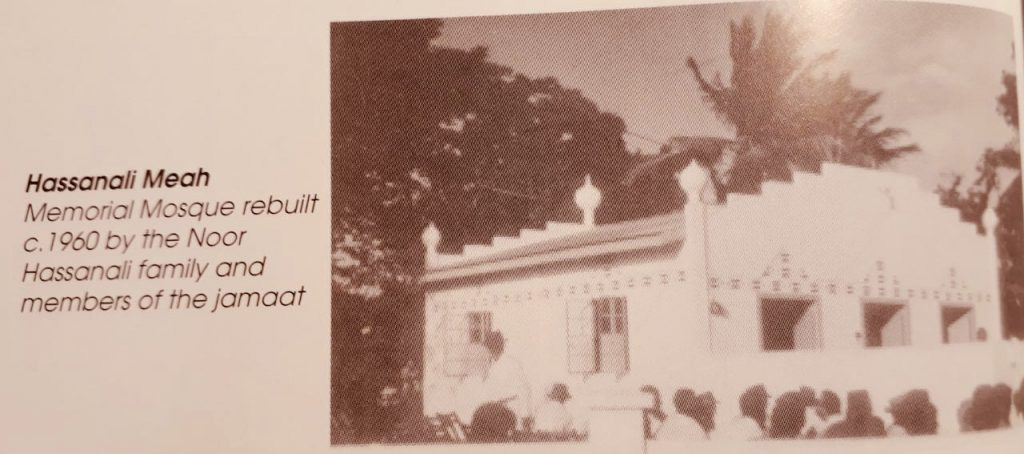
Picture of the Rebuilt Hassanali Meah Masjid, 1960
Source: https://www.caribbeanmuslims.com/history-of-hassanali-meah-memorial-masjid
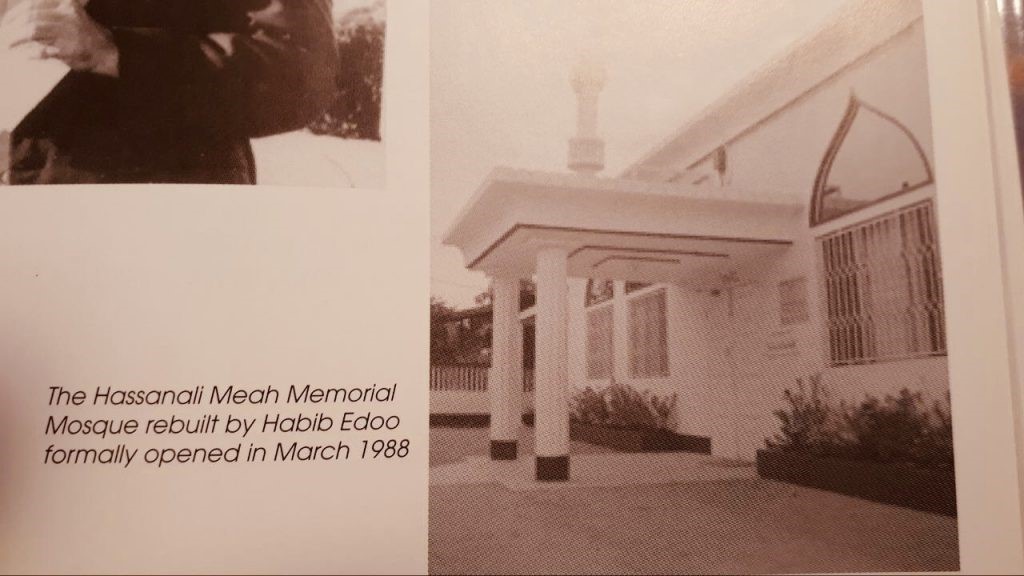
Picture of the Rebuilt Hassanali Meah Masjid, 1987
Source: https://www.caribbeanmuslims.com/history-of-hassanali-meah-memorial-masjid
- Masjid ul Nur Longdenville, 1918
The masjid was established on the Caparo Brasso Valley Road, Longdenville, which is now the Main Road, Longdenville. It was built to serve the spiritual needs of the Muslims living and working on the sugar estates in Longdenville, the Clay Block factories and the agricultural estates. The land was donated by Ameer Kanhai of Longdenville. It was originally a tapia house structure with a thatched roof and it was eventually rebuilt as a clay structure. Haji Shair Ali was a key figure in the activities of the masjid from the 1940s until 1989.

Picture of the Masjid ul Nur Longdenville
Source: https://www.facebook.com/MasjidulNurLongdenville/photos/p.612127175788017/612127175788017/?type=1&theater
This blog is only an introduction to this topic as these are only a few of the mosques in Trinidad. If you would like to contribute to our research on Islamic heritage in Trinidad and Tobago please send an email to info@nationaltrust.tt.
Author: Karishma Nanhu
Sources
Ali, Shahid. 2009. Dookie Meah – Founder of the first Trinidad Mosque in Calcutta Settlement, Freeport. https://www.caribbeanmuslims.com/dookie-meah/2
Edoo, Habib, 2019. History of Hassanali Meah Memorial Masjid. https://www.caribbeanmuslims.com/history-of-hassanali-meah-memorial-masjid
Kassim, Halima. Muslims and Missionaries of Trinidad. ISIM Newsletter, 2/99. https://openaccess.leidenuniv.nl/bitstream/handle/1887/17151/ISIM_2_Muslims_and_Missionaries_of_Trinidad.pdf?sequence=1
Masjid An Nur Eid Ul Fitr 2018 Magazine. Longdenville Jamaat (Congregation) History And Development. https://www.caribbeanmuslims.com/longdenville-jamaat-history-development

